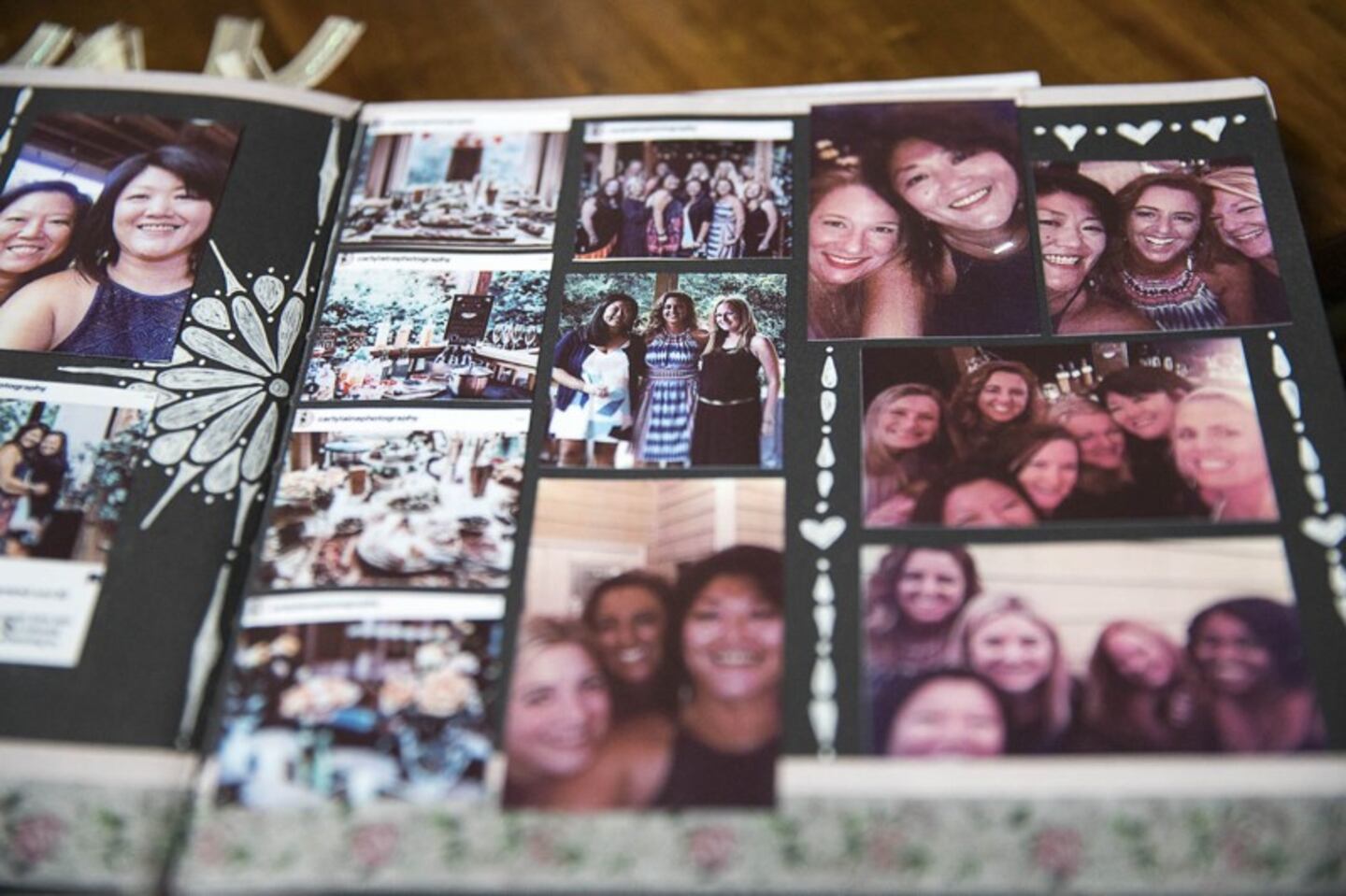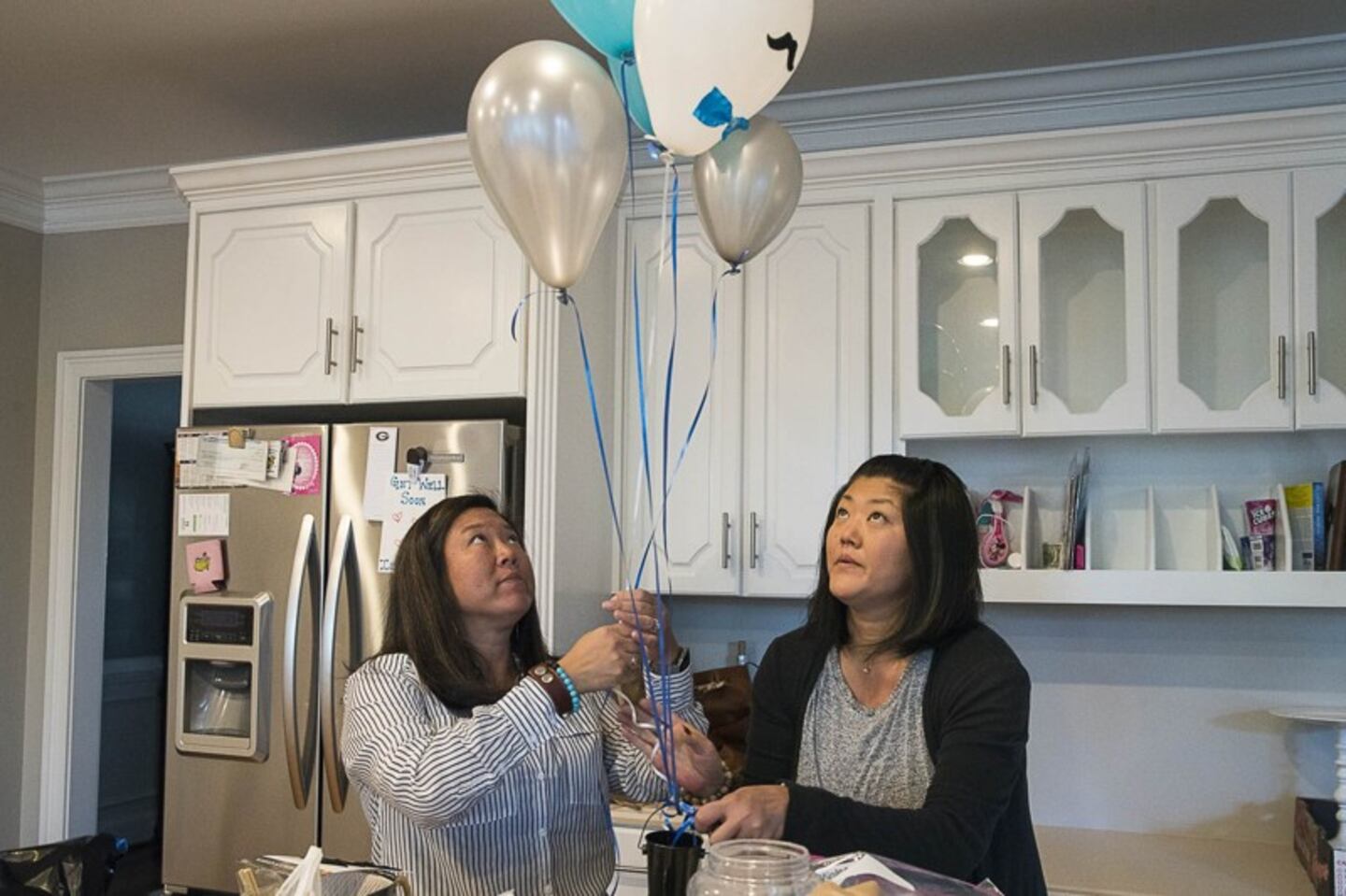For nearly three decades, Janine Dzyubanny thought she knew her life story.
She could easily recount the information in the adoption file her parents allowed her to read at age 16. Abandoned on the streets of South Korea as a baby, she had been taken in by an orphanage in Seoul and quickly adopted by her family in New Jersey.
Growing up with three older brothers, she never wondered about her birth parents unless she got into an argument with her mom and dad. Even then, her thoughts of what it would be like if she hadn’t been adopted generally ended with her feeling grateful that she had. “From a young age, I recall thinking I was lucky,” said Janine, 42, of Johns Creek. “I thought I had been abandoned. I never thought it was possible (to find my birth parents), so I never went any deeper with that stuff.”
But as she got older and as DNA testing became more accessible, Janine grew curious. She didn’t want to find her birth parents, but she did want to know what her DNA held. Was her diabetes genetic? What other health issues should she be concerned about? Was she even Korean?
So in May, she spat into a plastic vial, sealed it in an envelope and dropped it in the mailbox. Ten days later while on vacation in Galway, Ireland, she got an email that would change her life.
You share 47.9 percent of your DNA with Jennifer Franz and we predict she is your sister.
‘You and I are sisters!!!’
In the old estate where she was staying, the Wi-Fi was spotty. Janine frantically clicked over and over again. Then using the messaging tool on the 23andMe DNA testing website, she fired off an email to Jennifer Franz.
Jennifer Franz had also been adopted from an orphanage in Korea. She was just under 2 years old when she went to live with her family in New York. By the time she turned 3, Jennifer, her parents and her four older brothers had moved to North Carolina. She was painfully shy as a child, and with the youngest of her brothers a full 10 years older than she is, it sometimes felt as if her brothers were more like fathers.
Jennifer, 43, of Canton is now a married mom of two. Last year, her husband presented her with a DNA testing kit for Christmas so she could learn more about her health history. When the results arrived weeks later, the information about her ancestry seemed dull — a few distant cousins but no close relatives.
She was vacationing in Aruba when two emails popped up in her inbox from 23andMe — one from the website alerting her that she had a potential relative, and one from Janine.
Hi, my name is Janine and I just received my results that show you and I are sisters!!!

Jennifer freaked out. She closed the message, then went directly to the 23andMe website to view her account. Then she went on Facebook to stalk Janine.
They began messaging through the website. Then Janine sent Jennifer her email address. Two hours later, she sent her phone number. “It just wasn’t going fast enough for me,” Janine said.
They quickly discovered their similarities. They had both lived in Georgia for over a decade. They both have 14-year-old daughters (Jennifer also has a 13-year-old son). They are both huge soccer fans. They both love fashion and style as well as beer and bourbon. And for more than four decades, they had both been completely unaware that they shared half of their DNA with anyone other than the parents who put them up for adoption.
Since meeting this summer, the sisters have developed a strong bond. The experience has been exhilarating, exhausting and a life lesson in how fluid one’s identity can be. “We weren’t expecting anything significant, just everyday regular results,” Janine said. “Never did we expect to find a sister.”
Piecing together their past
Their story began as does the story of many children adopted from South Korea in the 1970s and 1980s. South Korea began allowing international adoptions in the 1950s when the end of the Korean War brought a boom in war orphans and biracial babies born to U.S. servicemen and Korean women. Korean society placed such a high value on bloodlines that interest in domestic adoptions was limited.
Of an estimated 200,000 Korean children adopted by families in other countries, 113,931 children arrived in the U.S. between 1953 and 2017, according to data from the South Korea Ministry for Health, Welfare and Family Affairs and the U.S. Bureau of Consular Affairs.
In November, after receiving information from Korea Social Services Inc. (KSS) — the agency that handled the sisters’ adoptions — Janine and Jennifer begin putting together details of their early lives. They were dropped at the orphanage on Aug. 23, 1976. Janine, named Mi Sun Han, was about 5 months old. Jennifer, named Mi Kyung Han, was 18 months old. Their parents were unmarried factory workers without the means to care for two children. They had been feeding their newborn starch and water instead of milk. Their mom had to return to work two weeks after the baby was born, and while their father was designated legal guardian per Korean tradition, it was their mom who dropped them at the orphanage.
A month later, Janine was adopted. But as she recently learned, the agency swapped her file with the file of another baby. Her parents thought they were adopting Mi Hee Lee, a baby girl born a month after Janine, but the baby died during the adoption process. Without alerting the waiting parents, the agency sent Janine in the baby’s place along with the files of the deceased baby. Janine arrived at the welcome house in Doylestown, Pa., on Sept. 28, 1976. Jennifer was adopted three months after her sister. She arrived at the same welcome house on Dec. 27, 1976.
All her life, Janine had celebrated her birthday on April 10. But after she discovered the agency switch, she learned her real birthdate is March 5. “It is like an identity crisis,” she said. “I was in shock.” Janine’s mother never thought the newborn in the picture looked like the child in front of her, but who was she to question? When Janine received her real adoption file from KSS, she and Jennifer saw their surnames matched. The mystery was solved, but the sisters still had more to learn.
So much of our identity is based on external factors but DNA doesn't lie. Consumers are increasingly seeking more insight into their health or family history. The number of people who have had their DNA tested through direct-to-consumer genetic genealogy tests — the largest of which are 23andMe, Ancestry.com and FamilyTreeDNA — more than doubled in 2017 to more than 12 million, according to industry estimates cited in MIT Technology Review.
While the private company does not share growth metrics, Samantha Esselmann, content and curation scientist for 23andMe, said 23andMe currently has more than 5 million customers in its database. If they opt into the “DNA relatives” tool, they are able to connect with genetic relatives. The feature estimates a predicted relationship and range based on the number of segments and percent of DNA shared. “In general, you share more segments and a larger percentage of DNA with close relatives than distant ones,” Esselmann said.
Janine and Jennifer decided to take another DNA test with LabCorp, which also confirmed their relationship.
Making up for lost time
The first time they met on June 18 at Avalon in Alpharetta, both of them brought their best friends along. Janine was seated when she saw Jennifer approaching. She started fidgeting and fretted that she would say something wrong. She jumped up before Jennifer reached her and walked over. She opened her arms. Jennifer hugged her back. “Where have you been all my life,” Janine said.
“I was speechless. It was one thing to talk for a couple of days hiding behind the computer and the phone, but to see her … and she’s taller than me, too, which really sucks,” Jennifer said.
“I thought this is great, I have an older, shorter sister,” Janine said.
It was the only time they felt a bit awkward in each other’s presence, and it highlighted the one area in which they are most different. “I am very low-key and reserved,” Jennifer said. “I’m going to test the water with my big toe and see if I want to jump in.”
Janine, on the other hand, is very outgoing and spontaneous.
“That is probably our biggest difference,” Jennifer said.
“It works out,” Janine said.
The next day, they met for coffee, just the two of them, unraveling the details of their past and sharing threads of their lives over the past four decades. When they looked at pictures of themselves in their 20s, they started to see a resemblance they hadn’t seen initially. Stories they shared about their childhoods revealed similar upbringings. They hosted several gatherings to introduce their friends and family.
One night, Jennifer’s parents came over from North Carolina to have dinner with Janine, Janine’s brother and his family at Jennifer’s house. They all sat around the table sharing stories. Jennifer’s mom lamented that she hadn’t known at the time that her daughter had a sister. She would have adopted both of them, she said.
“It was really cool,” Jennifer said.
“It was a perfect night,” Janine said.
Janine’s parents had always encouraged her to find her family if she wanted to, but she had never thought it possible. Janine spends hours on the phone with her mom, who enjoys hearing about her daughter’s journey and the memories that the sisters are creating.
They had planned such wonderful events with family and friends that Jennifer told Janine she should start a party planning business. After the third time, Janine agreed, but only if Jennifer would join her. Lucky Penny Party Planners has become a side business for the sisters, who are both preschool teachers, and has served as another pathway for their burgeoning relationship.
They never expected to find a sibling or any information about their birth parents when they took those DNA tests so many months ago, but now the sisters talk about reaching out to the mother who put them up for adoption. They learned through death records that their father died in 2004. Their mom is likely still alive at age 65, but KSS has said privacy laws prevent them from sharing any information about her, Janine said.
It is possible that their mother doesn’t want to be found, but maybe, thought Jennifer and Janine, she would at least want to know that in the end, her daughters are OK and that they found each other.
Cox Media Group







